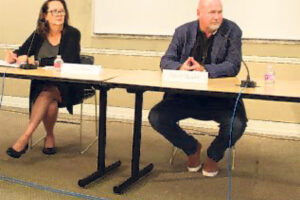Camas City Council members have approved the 2020 collective bargaining agreement between the city of Camas and the local firefighters’ union, the International Association of Fire Fighters, Local No. 2444.
On Monday, Aug. 17, during the Council’s remote meeting, council members unanimously approved the one-year agreement, which expires on Dec. 31.
The new contract includes two pay increases that will be retroactive to Jan. 1, including a 2.7 percent cost of living adjustment and longevity pay that will be added to the firefighters’ base hourly pay. The longevity pay will kick in after 10 years, with a 1.75 percent increase and increase to 2 percent after 15 years of service and 2.25 percent after 20 years with the fire department.
Jennifer Gorsuch, the city’s administrative services director, said Monday that some of the additions in the new contract will not be retroactive to Jan. 1.
Those include an increase in cell phone allowance and special-duty assignment premium pay for rope rescue technicians, EMS supply coordinators and self-contained breathing apparatus technicians.


